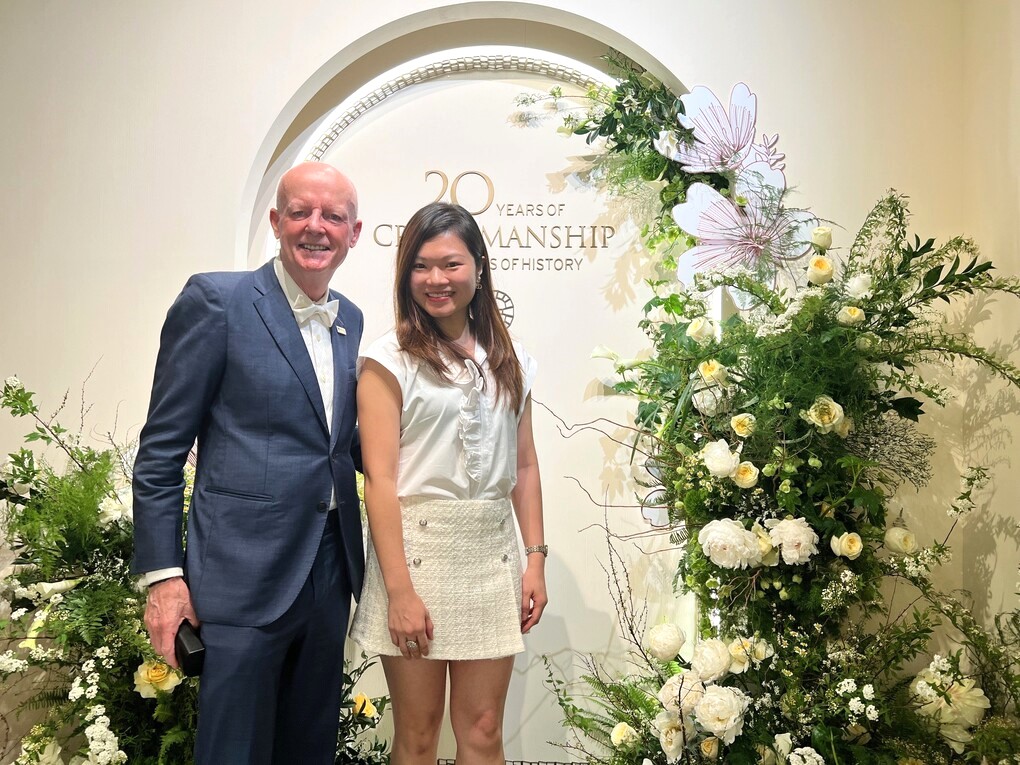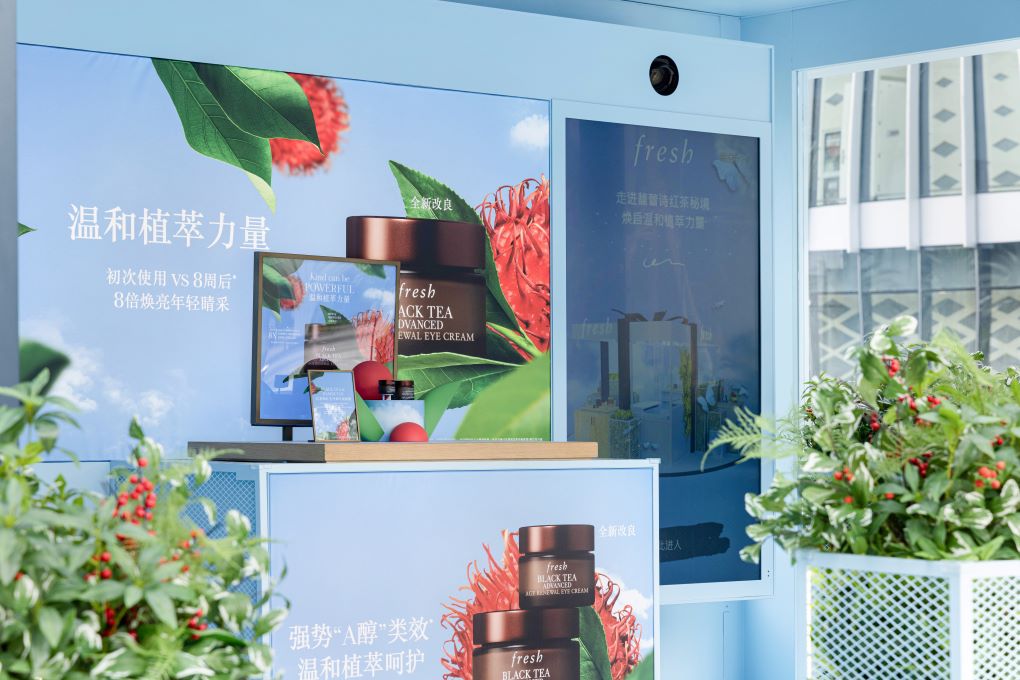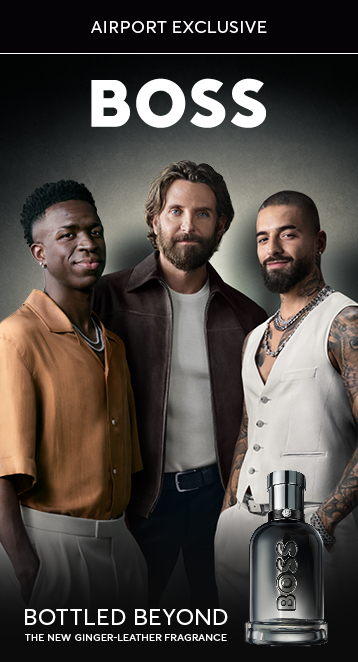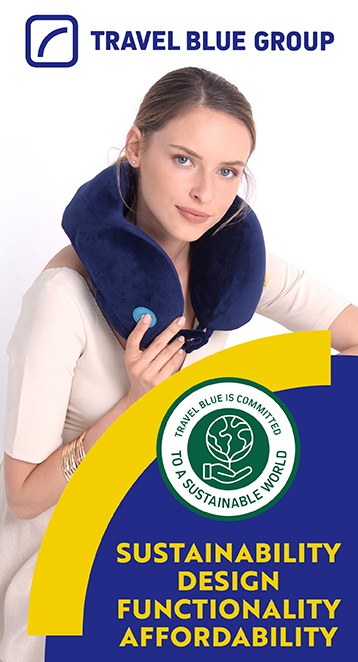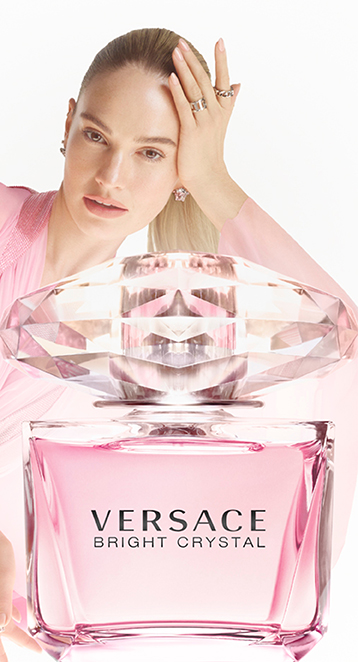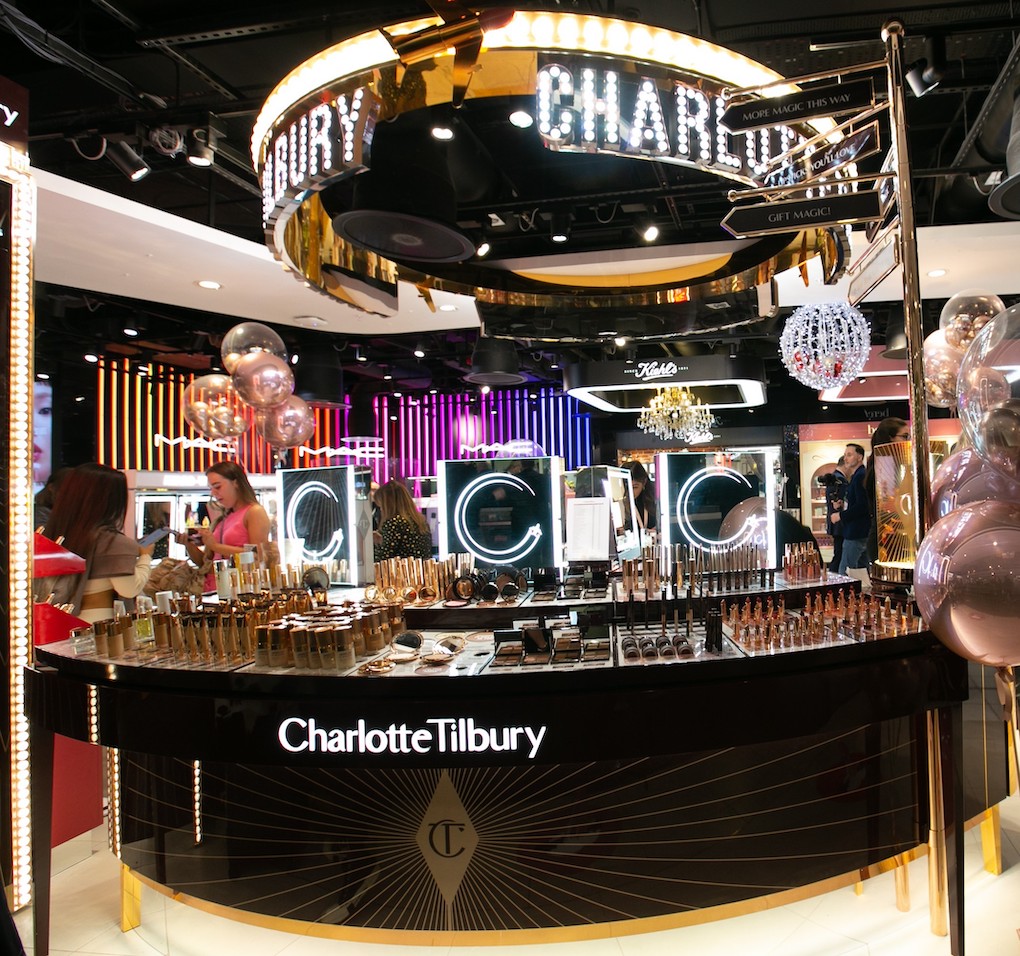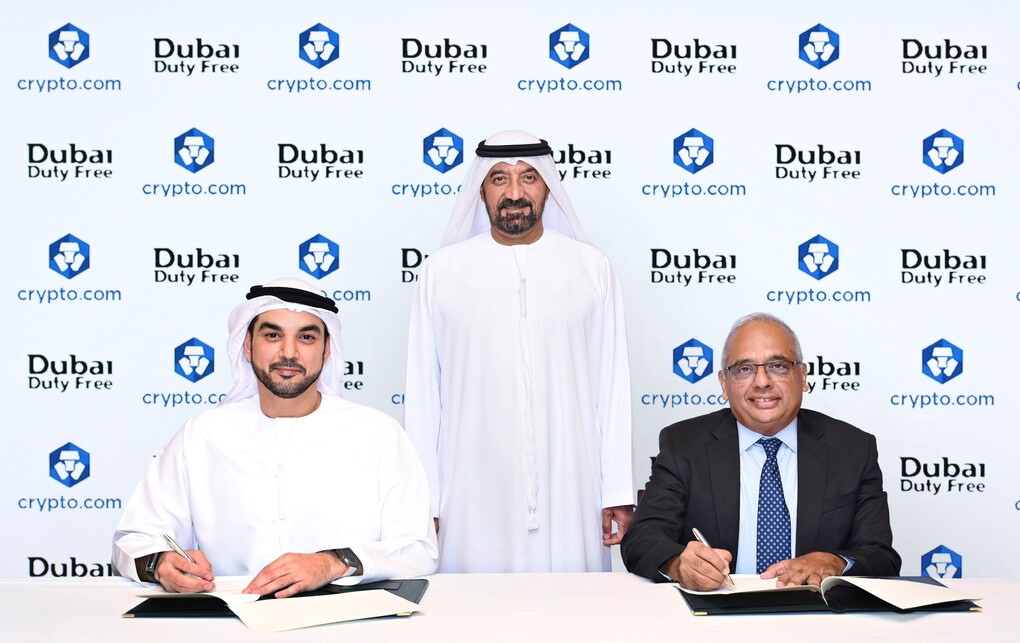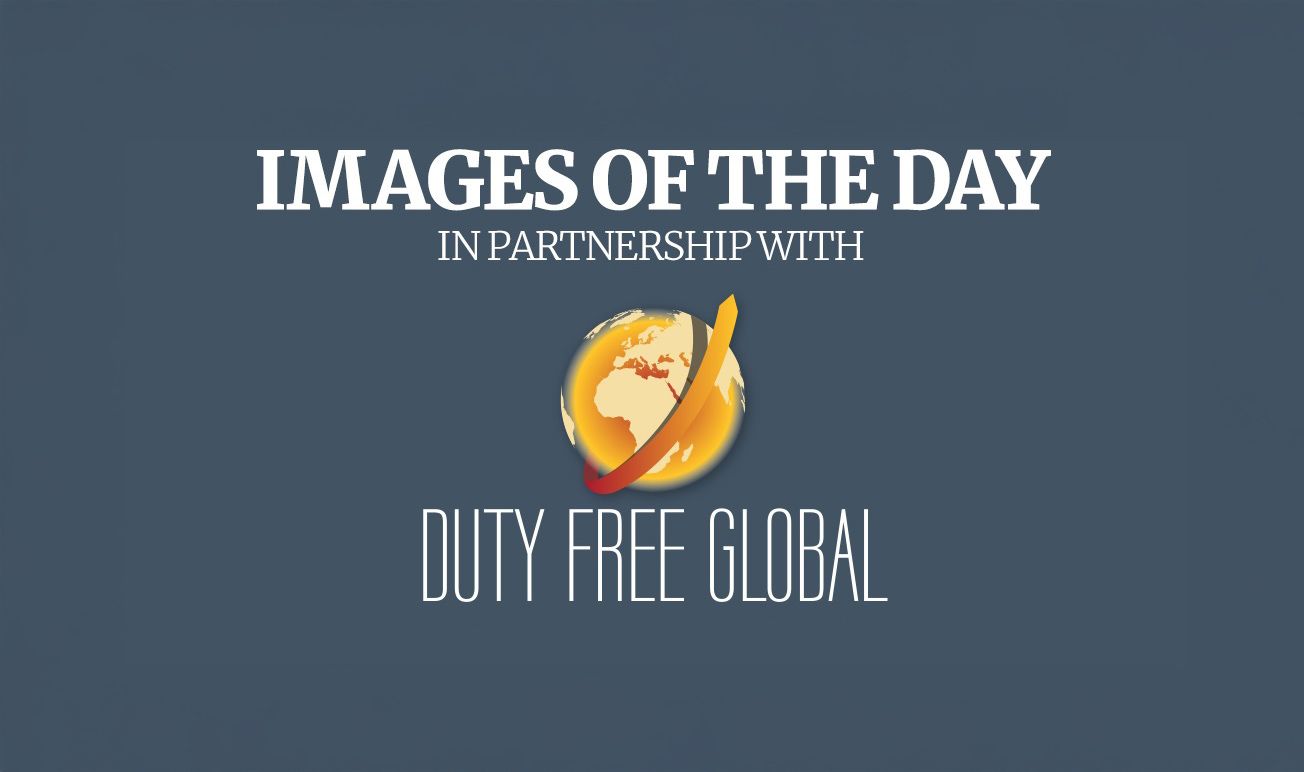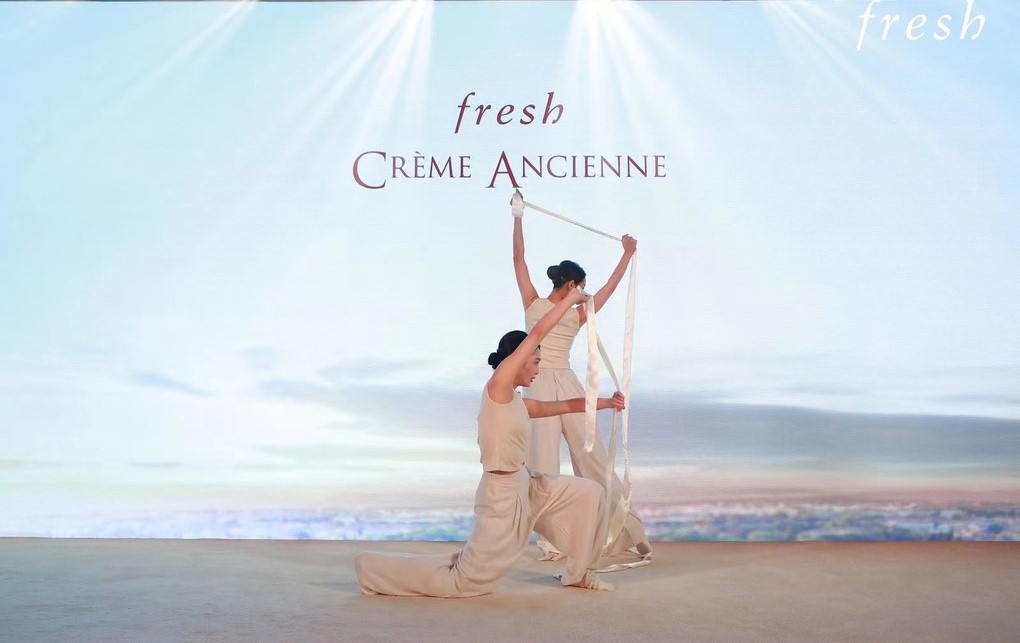
Prologue: The back story of fresh, the LVMH-controlled skincare brand, sounds on first hearing like a work of fiction. Founded by an immigrant couple in Boston as a small store selling hand-wrapped soaps, fresh grew within little more than a decade first to US and then international renown as a brand synonymous with transforming everyday routines into sensorial rituals.
Based on an obsession with natural ingredients, a craftsman’s approach to beauty and supported by the might of LVMH since 2000, Co-Founders Lev Glazman and Alina Roytberg have created a global brand that resonates strongly with consumers worldwide for the integrity of its values.
In 2004, fresh launched Crème Ancienne, a skincare line that seems to defy commercial logic in that it needs to be prepared in small batches, by hand. Not, as this story reveals, by any hand but by those of trappist monks in a remote Czech monastery.
In late April, fresh celebrated the 20th anniversary of the now hugely successful line during a gala dinner at Raffles Hotel in Shenzhen, China. The Moodie Davitt Report Founder & Chairman Martin Moodie was on hand and over lunch chatted with the brand’s creators about their extraordinary journey.

Beginnings
America, the great land of opportunity for millions of immigrants from the nation’s early colonisation to the present day, throws up a myriad of entrepreneurial success stories, tales of unlikely triumph against the odds. The much-touted American dream, writ large.
Within that context, the life and career journey of Lev Glazman and Alina Roytberg, born in Russia and Ukraine, respectively, and founders of wellbeing and skincare brand fresh, surely ranks among the more memorable.
Chatting with The Moodie Davitt Report over lunch at Raffles Shenzhen, Glazman responds to my conversation-warming gambit about the brand’s 1990s genesis with an anecdote, the first of many this natural-born storyteller will tell over the ensuing hour.
“In order to fully understand the story and the passion behind the fresh brand, I like to tell how the seed was planted when I was actually very, very young,” he begins.
“I was born in Russia – it was the USSR at the time – in Saint Petersburg. My parents went there to work as a lot of young people used to because it was a little laxer, you could do more business there.”
He recalls being a young boy on a bitterly cold October morning in Saint Petersburg; rain pattering down and dank, sludgy snow on the ground while he and his mother shivered in their single room within a communal apartment shared by three families.
“My father was away on work. And I was doing my usual stuff, working with playdough. My mother was having a typical Saturday – a ‘beauty day’ with rollers in her hair.”
Suddenly one of his mother’s friends knocked on the window, declaring urgently, “You’ve got to come – very quickly. Antoine is here. He’s just come back from Paris.”
Within minutes mother and son – he without a clue who Antoine was – were in a cab, the boy wrapped in a coat but still in his pyjamas and slippers, she with rollers in her hair and wearing just a negligee under her coat. “I didn’t know where we were going. Every time I asked my mom, she was like, ‘Don’t talk.’ She just touches me and says, ‘Be quiet’.”
The young boy’s imagination was running wild. Who was this mysterious Antoine from Paris? After 30 minutes the car dropped them off in a barren, semi-abandoned area of the city.
“As we’re turning the corner, I see a man, lots of boxes, and people running around. Plenty of craziness going on.” Suddenly he knew precisely where he was. A black market.
“Living in one room with my parents, I remembered their conversations about black markets while I pretended to be asleep,” Glazman continues. “This was the period of the Iron Curtain in Russia, like North Korea is now.”
His mother pointed to a man removing bottles from a box. “That is Antoine.” She joined a line of women and waited to be served.
“I still didn’t know what she was buying. Finally when my mother made her way to the front he gave her a box. She paid him 120 Rubles, equivalent to one month’s salary. Our rent was 22 Rubles a month, so it was almost six months’ worth.”
The subsequent moments left an indelible impact on the young boy. “My mother opened the box. Inside was a little bottle of fragrance. It was beautiful. I had never seen anything like it.
“Something happened at that particular moment. I had also never smelled anything like this in my life. It was divine. But also, I could see the transformation that was happening to me and my mother right in front of my eyes. Everything was melting away. Everything.
“At that particular moment I saw how transformative fragrance can be and how it can really affect your psyche. That moment you’re in is so impactful.”

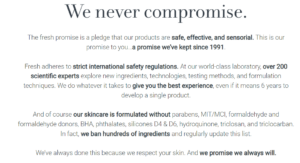 Back then in Russia there were only two fragrances available, one men’s, one women’s, both called Red Moscow (Krasnaya Moskva), Glazman recalls. “It was an imitation of Chanel No. 5 and it almost smelt like ammonia. It was the only fragrance available, so everybody smelled the same wherever you went, on the train, at family gatherings etc. And if you wore it once, you could not wash it off your clothes. It was like mothballs.
Back then in Russia there were only two fragrances available, one men’s, one women’s, both called Red Moscow (Krasnaya Moskva), Glazman recalls. “It was an imitation of Chanel No. 5 and it almost smelt like ammonia. It was the only fragrance available, so everybody smelled the same wherever you went, on the train, at family gatherings etc. And if you wore it once, you could not wash it off your clothes. It was like mothballs.
“It was like they wanted you to be branded with Red Moscow. So when I experienced this new perfume, it really did something to me. I understood that my life probably changed forever. I started thinking and dreaming a lot about fragrance. What is it? How did they create it? And I started understanding that there was so much more to the world and so much outside of that cage we were all sitting in.”
It’s a story that Glazman has clearly told on many occasions but the potency of his expression as he relates it, underlines just how pivotal the moment was.
“That’s really where it started for me, my passion for fragrance, which led to beauty, of course, because they’re all interconnected,” he explains.
“Beauty to me is transformative. It’s also democratic – anybody can have access to it. You might be broke and not able to afford a Chanel bag but through beauty you can always have a moment with yourself.”
Creating an emotional connection
When Glazman was ten years old, the family emigrated to Israel and 11 years later they went to the USA. It was there he met his wife to be, another immigrant, Ukraine-born Alina Roytberg.
From early on she shared her partner’s passion for beauty products. “Very quickly it became a mutual dream,” he explains. “When we started talking about the concept of fresh, it was very much about natural ingredients. But back in 1991, you really could not find much out there, because there was a different tradition of beauty at the time.
“No matter how many times I went to the department stores, I could not understand what was in the products or emotionally connect to something that was so impersonal.
“So we wanted to introduce the world to natural ingredients and start the conversation about them. We wanted people to feel connected to the ingredients they were using on their body and through that to create an emotional connection to the brand in the same way I do.”
And so a momentous journey, one whose genesis lay in a tardy Saint Petersburg black market, began.
The pair opened a single shop in Boston, initially selling hand-wrapped soaps. But they were doing more than simply retailing a product. “We were telling stories,” Glazman says of the apothecary-like store and product range they developed.
“We wanted to explain why all of these great remedies had existed for so many centuries and how people culturally used them in so many different ways.”
Roytberg takes up the story. “When Lev shared his dream with me, he imagined something like this emporium selling all these amazing things. Because on the natural ingredients side all you had were two or three brands and The Body Shop. That was basically the landscape at the time.
“We were so excited about what we were sourcing. The shop felt like we could create this new world [of natural products], open the doors and people would come into it. That was the DNA and the core idea behind the brand, because at that time we had not thought of having our own product and line.”

Step by step the couple expanded the product range, sourcing mainly from small companies in Italy and France. Glazman had ultra-sensitive skin, a condition poorly served by the soaps available in America at the time, principally tallow, animal-based products from pharmacies or designer names based on similar formulas.
“We were fascinated by the vegetable-based soaps that were coming from places like Marseilles,” Roytberg recalls. “Some of these were made with natural oils. We started searching and bringing in a lot of different soaps with a vegetable base. It was a big category for the shop, because soap is like the bread of personal care. You buy soap, you use it, and then you buy it again.
“It was like walking into a bakery. And that’s what led to the development of our first product. We worked seven days a week from morning to closing. We were talking all the time to our customers. We were seeing what people got excited about and it was very similar to what we were excited about.
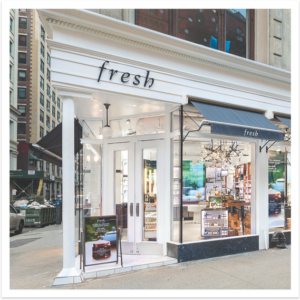
“So we weren’t existing in a vacuum. What you create sometimes comes from a personal need so it was great to see that other people had a similar need. That’s how we came to the creation of the first fresh product.
“You have to understand that selling an expensive soap for US$5-6, when other soaps were around 99 cents, was like selling a house. Many people just did not understand it. We used to say that if we could sell a US$5 soap, we could sell a US$200 vase. But you spend US$5 on a sandwich and it’s gone. This was a hard new soap that would last two, three months.”
Little by little – and then a lot by a lot – word spread. “We opened the shop in a cool neighborhood in Boston, not a retail neighbourhood. But the local press discovered it, then the national press. And while it did bring us some attention, it certainly did not bring a lot of business.”
The couple faced typical start-up challenges, notably the perennial issues of capital and cash flow. “We were struggling with finance,” Roytberg remembers. “We borrowed US$5,000 from my parents and US$5,000 from Lev’s mother, so we opened the store with US$10,000. And to buy inventory, just to exist, we had to borrow from somebody to pay somebody else. Banks [back then] were not interested in this kind of category, and there were no venture capitalists interested either.”
Storytelling
Most entrepreneurial success stories involve an element of luck, a seminal moment of good fortune. fresh was no different. It came in 1993 in the form of a small company the couple discovered in the mountains of Provence, France. The owners previously worked for French wellbeing house L’Occitane and had subsequently opened a modest production facility.
“They were also young and entrepreneurial and they got excited when we approached them about wanting to do this,” Roytberg recounts. “It was like kismet [destiny] because we went to their factory and were not only able to work on the soap formula but Lev was finally able to work on fragrances as well.
“So the dream becomes reality when you’re actually affecting the original product. To make a soap emollient and to be able to add shea butter and certain other things was momentous. We wanted it to be a big soap but we didn’t want angles or corners, so it was like a big oval bar.
“Alina and I are very passionate about creating products that are efficacious,” Glazman continues. “There is a science behind it, of course, and it’s also about giving people an amazing sensorial experience.
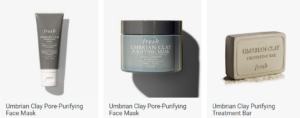
“But we’re also storytellers. We think it’s very important for people to know what they’re using on their body, to be educated about it. People really fell for it; they loved it and were fascinated with it. And our storytelling was following us through everything, in the presentation of our products and the attention to detail.
“It was so unusual back then; the soap was wrapped by hand in a certain way. It was like a semi-precious stone wrapped up using a little wire and it felt very different from anything else. The soap was different and the smells were very different.”
But semi-precious stones, even if made of soap, have to be paid for. Glazman recalls stocking 800 bars of soap at a time when the most popular line was selling around 12 units a month. “We had borrowed money from everybody to produce these soaps. And I said to Alina, ‘Listen, the issue is going to be we’re either going to sell a shitload of it, or we’re going to have soap for the rest of our lives!’.”
Attracting suitors
But the soap sold. And sold. “That one product became pretty much an overnight sensation because people just gravitated to us,” Glazman recollects. “For the first time, we didn’t really have to sell the soap. The soap was selling itself.
“With that, we realised what we were doing resonated with people and they wanted to hear more of the story we were telling.
“That was the beginning. From that point on, the sky became the limit – which we use as our core value. The sky is the limit, it’s like nothing stopped us. We created a lot of products that were first on the market. We disrupted the industry in a major way. In a very short period of time a lot of people and big companies started paying attention to us.
“By the year 2000, we already had big brands after us. That is how LVMH came into the picture. That’s how much our image grew.”
Glazman and Roytberg were risk-takers, storytellers and disrupters all wrapped up in one like the soap that had sparked their journey.
The impetus was no longer coming just from the Boston store – replicated in New York in 1998 and elsewhere – but a burgeoning wholesale business to independent retailers, specialist beauty shop Sephora and department stores such as Barneys.
“That’s what really kicked things off,” Roytberg observes. “We developed as a wholesaler and within six months we started introducing other products. We now had this bigger audience, because it was no longer one little store in Boston.”
With more shop openings and a growing wholesale and nascent online presence, business burgeoned. “We wanted people to be able to experience the product and the storytelling,” says Roytberg. “So having a digital presence was incredible. We also started seeing the industry changing. Men and women were sharing different things that they liked or interesting products on these online forums. And it became even bigger with Sephora opening in ’98 in the US.
“We entered Sephora in 1999, so we’ve actually been with them for 25 years this year. That’s when the brand started to get more known, people were writing about us online – saying that they want to try this product or that product from fresh.”
fresh was living up to its name in every sense, its inherent product qualities, social values and disruptive presence challenging the status quo. Glazman and Roytberg were risk-takers, storytellers and disrupters all wrapped up in one like the soap that had sparked their journey.
Glazman’s startlingly intense eyes blaze again at the memory. “It’s not only about taking chances. When you’re driven by passion and it’s authentic, funnily enough you almost feel invincible. You just don’t think about what it means.
“We didn’t even know how to put a business model together and didn’t have one until seven years in. We were operating from the seats of our pants. So we were releasing 30 new products on a yearly basis. We were unstoppable with new concepts and we were hungry to share. It was like everything that had been cooped up inside us was breaking through.
“Sometimes people were ready for it and sometimes they were not. But it was purely passion from our side. We were not making any money. We could barely meet our rent for our apartment and store. But everybody was very nice about it and we were on payment plans. We wanted to keep going because we knew we were doing something different.”
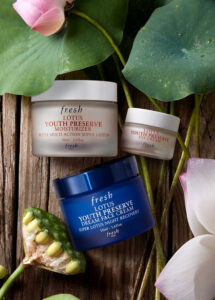
Was there a critical speed bump? “Well, there was always a big speed bump because we had to borrow from Paul to pay Peter, from Peter to pay Paul, from Peter to pay Michael and from Michael to pay Jane,” Glazman replies. “There was no end to it. We were running out of people at this point to borrow from and promise to pay next month.
“From the moment we decided to launch our products – and we were always going to do that – to the moment we decided to move outside our own world and start expanding throughout the United States, that opened up a lot of things for us. The real speed bumps happened later. Because in the beginning, what we were doing was almost the low-hanging fruit.
“But when it starts becoming a brand and takes on a life of its own and you’re working with people for manufacturing, production, distribution and all those things, that’s where the speed bumps come in. Then it becomes a matter of how you manage the success.
“We would ship the product to a store which is very popular, like Barneys, and they’d be selling out in three days. Then calling us and saying, ‘We need more orders as soon as possible.’ How do we produce it? We didn’t have the money to fund these huge orders. There was nobody that could help us financially. So, we had to manage our own success. The demand was so big, we couldn’t even catch up with that.
“So, it was a good speed bump. It was a good problem to have, but it lasted for quite some time because we never had enough . Everything would be selling out, all the time.”
The financial pressures were a constant, but so was the sell-through. And the corporate world was watching. It wasn’t long until, in 1999, suitors came calling. And they were no minnows.
“I’m not going to mention the other companies, but the ones that wanted to partner with us were very big,” Glazman recalls. “We were flown to places. They really wanted a piece of fresh one way or another.
“But we were not – and they were not – ready for it. We shut the door on them because we felt our vision needed to be alive. We still wanted to do so many things and make sure that in the type of partnerships we were going to have we still had our autonomy.
“We wanted to make sure they didn’t go into the territory of how we made our products and designed our stores. We did not want anybody to interfere with our vision. We were very, very protective of that.
“The part that scared Alina and I the most was we felt like we still had so much to offer and so many ideas. We did not want that to stop. So, at some point during that difficult year of 1999, we decided that maybe we needed to hold off on all of it.”
The decision to walk away from courtship was short-lived. The Bernard Arnault-controlled LVMH Moët Hennessy Louis Vuitton had been among the most ardent suitors and was not going to be easily rebutted. “LVMH came back and they were extremely passionate about the brand. They said, ‘You guys name it. Tell us how you want it to be done. And we will structure a deal that works for you, so you will be able to continue doing what you do.’”
A partnership takes shape
When they met, Arnault would underline LVMH’s own family values and its respect for founders. “Can you imagine if Christian Dior was alive today?” he would say proudly of the great French fashion to fragrance brand’s progress under his leadership.
That respect paid off for both parties. “We walked into a partnership,” Glazman comments. “It became more compelling because they gave us exactly what we were looking for in terms of research and development. They opened the doors to their laboratories where they do all the development for Christian Dior and Givenchy and other brands.
“What was unique, though, was they gave us our own laboratory because they believed in our product development. We did not want to grab from any other formulas, we wanted to create our own.
“Brands sometimes share things. We said, ‘No. We need to have our own research, our own science. We’re too curious about stuff and we want to research natural ingredients in our own way and to create texture and sensorial experiences for people. We just want everything from scratch, so we need to have our own chemists and we need to have our own laboratory.’
“They believed in our vision. It has stayed this way for all the years that we’ve been partners. We still create our products, and approve those that go onto the shelves and the vision and ideas behind them. But our partnership has really proved to be right for all these years.”
“When you are in a store where there is no traffic, and nobody knows about you, and you want your dream to come true, you appreciate everyone that walks through the door” – Alina Roytberg
Like many acquisitions and mergers, this union between a luxury powerhouse and a young maverick company had its challenging moments. “The first three years weren’t that easy, because it’s like any marriage,” Glazman explains.
“I remember the honeymoon. And I remember we drank a lot of vodka when we were closing the deal and I think the hangover continued for three years.
“But we got to the place where we had to have a serious conversation on what our relationship would be going forward. Alina and I never hold anything back and we have a lot of respect for Bernard Arnault.
“At the end of the day, we are all waking up and concerned with the same issues. His is on a different level, but it’s on a big scale for us too. So, we’re equal in that way. We were sharing our issues and our vision for where this brand needs to go, but it took some time.
“In the first three years, we took time to get to know each other culturally and the dynamic of our very energetic approach on how we wanted to grow the brand. They started understanding us better and it was from that point on that it really started opening up. But it didn’t happen overnight.”
Asia beckons
Nor did international expansion. Initially the partners continued to focus on North America. But then came another stroke of fate. A Korean couple who were friends of Glazman and Roytberg decided to return from America to their homeland and offered to launch fresh there.
It was a landmark development, Roytberg says. “So in 2003, fresh came to Korea. They opened a boutique and a year later we entered department stores. It was really interesting for us; it was our first experience with Asia. We gained a lot of learnings about skincare. We started seeing how the consumer in South Korea was much more focused on skincare and in some ways the development of our skincare products such as Crème Ancienne were shaped by them.”
The brand’s values and properties quickly gained both consumer resonance and commercial traction in Asia, leading to the opening of offices in Hong Kong and, in 2013, in Mainland China.
“It was really something special,” says Roytberg. “They appreciated the quality and especially the emotional connection to where things come from and how they grow.”
Talking travel retail
As Asia beckoned so did travel retail. “In the old days, all you saw in airports were major brands,” Roytberg comments. “But times started to change. Travellers started to see products they were surprised to find.
“We said, ‘We’re consumers of our products and people just like us are consumers of our products. They like to travel; they like to go places. So the idea of being able to discover [in-store] something they don’t know and don’t expect is extremely compelling.’”
The brand’s nascent Asian travel retail presence in South Korea burgeoned across the region. “It became a huge part of fresh,” she says. “We wanted to make sure that fresh consumers or would-be consumers could find our products offline, online or while travelling.”
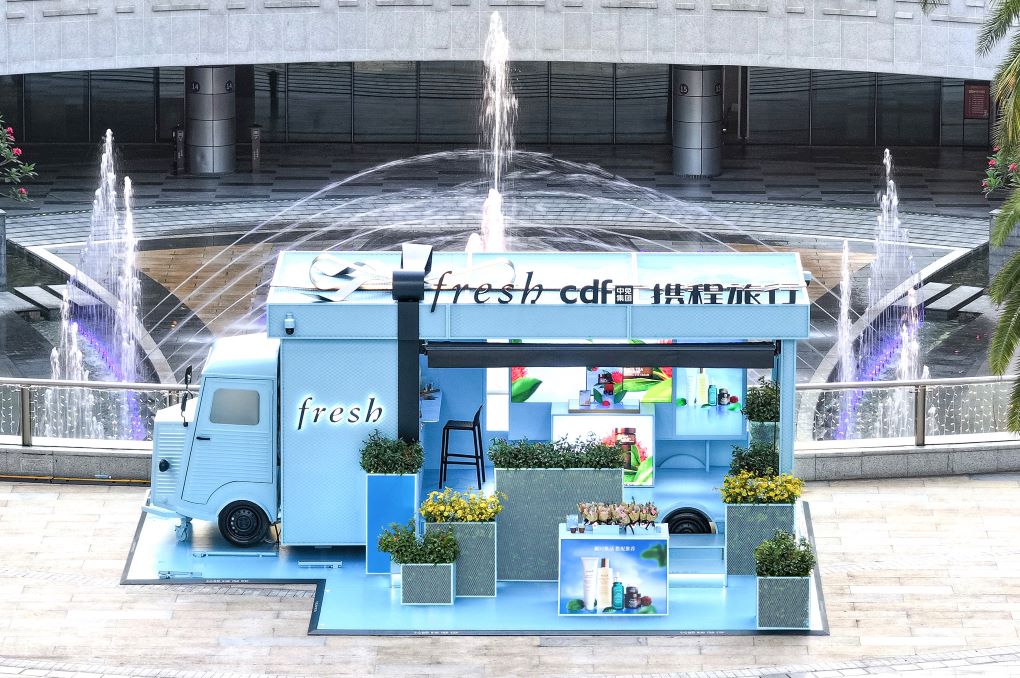
The dream machine
Those Glazman eyes light up once more as I ask him how he feels when he sees his creation in the great airports of the world. “Sometimes, it feels like… am I still dreaming? What’s going on? What happened? How did it happen? Because time flies so fast and once you’re in it, things just keep moving. You make mistakes. You make great strides, make successes. All those things.
“It’s all clumped into one but the machine is moving. It’s very, very dynamic. And all of a sudden, you wake up and go, ‘Oh, my god, now I’m in Korea. Now I’m in Hong Kong.’ And there’s like ten people sitting in front of you, our people who work with us, for fresh. Yesterday we were in [Mainland] China, we had over 100 people. It’s incredible. And they’re all part of your vision and part of your dream.
“It’s happened in the blink of an eye. Alina and I were dreamers… we didn’t grow up in the best conditions but we were lucky enough that our parents took us out of there, me when I was ten and Alina when she was 16. But we were lucky to get out… to be able to dream. When you look at the reality and what’s happening around you after all these years and what’s been created, you’re blown away.”
Roytberg picks up on the theme. “The reason we talk about the first store a lot is that as the company grows and we’re holding sessions with new team members, what they see now is sort of a baseline. But when you are in a store where there is no traffic, and nobody knows about you, and you want your dream to come true, you appreciate everyone that walks through the door.
“And the basis of that hospitality aspect is something we’ve carried through into fresh on every level, whether it’s the heart of the travel retail team or other markets. We want to try to make that experience very special.
“It’s a lot more challenging in an airport environment when people only have a couple of seconds. But in general, the goal is still the same: you want to engage these people since you appreciate the fact they chose to stop by the fresh counter or come into the fresh stores.
“Because we’re not just telling them stories. We want to bring something into their life that they will enjoy, that will make them feel good and make their skin improve.”
Ancienne and modern
If the tale of how a store selling soap somehow blossomed into a global skincare brand seems unlikely, then that of Crème Ancienne, the hugely successful fresh skincare line founded 20 years ago, almost defies credibility.
Roytberg recalls brainstorming with her husband at the dedicated Fresh Research Lab within LVMH’s Helios Research Center in France.
“We wanted to create an amazing, rich nourishing cream, one that acted as a barrier to protect the skin – almost old-fashioned in its texture.”
And there, in the term ‘old-fashioned’, lay the cue. A fresh lab scientist remembered a book in the extensive LVMH library dedicated to the history of beauty products. It detailed the work of second-century scientist Claudius Galenus who crafted balms to treat gladiators’ wounds. Not only the work but the precise formula for what is reputed to be the world’s first skin cream.
“It was very simple – olive oil, beeswax and rosewater,” Roytberg recalls. “But the percentages were so incredible because there was so little water (around 20%). How was it possible for the cream to actually have so little water?”

They decided to find out. After all, the fresh lab had all the requisite ingredients. “It was very late at night, just after 11:30pm, and we’d had a couple of glasses of wine,” recalls Glazman. “We said, ‘Let’s mix it.’
“My heart was pumping. I’m actually touching the history of something and I can’t believe nobody has ever done it. Like, seriously? This is the most fascinating thing ever.”
At first things didn’t look promising with both colour and texture all wrong. But as the rosewater was added to what had been a thick yellowish paste, everything changed. “All of a sudden, like a switch went on, it became white! It turned into cream. It was incredible. So we waited a little bit, about half an hour until it cooled off, because we had to melt the wax and you have to mix the product a particular way.
“We tried the product and I almost flipped out. I couldn’t believe it. We actually took a 2,000-year-old formula and followed the instructions. We actually made a cream, which was insane. We were like little kids, jumping up and down.”
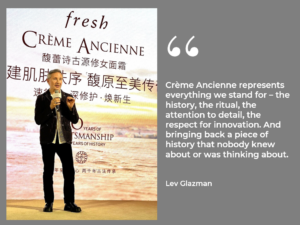
Roytberg had already come up with the name Crème Ancienne but there was a seemingly insuperable stumbling block.
“You’re getting too excited because there’s no way we can produce it,” the fresh scientist told Glazman. “You can’t do it in an industrial setting because it’s too precise. I don’t think there is even machinery that can do it, because you’re dealing with two very different raw materials. One is a liquid the other is solid. It would have to be melted and have to be at a certain temperature.”
The list of barriers to production of the desired rich, emollient texture went on and on. But Glazman was having none of it. “I don’t care. We’re launching this product. This is exactly what I’m looking for.”
Perhaps it was the wine talking but then came the second eureka moment of the evening. “You know what? We can produce it in a monastery,” Glazman exclaimed. “It’s a 2,000 year-old cream. Monks have been around forever. They created so many remedies before. They still make jams, honey and other things.” So why not a skin cream based on an ancient formula?
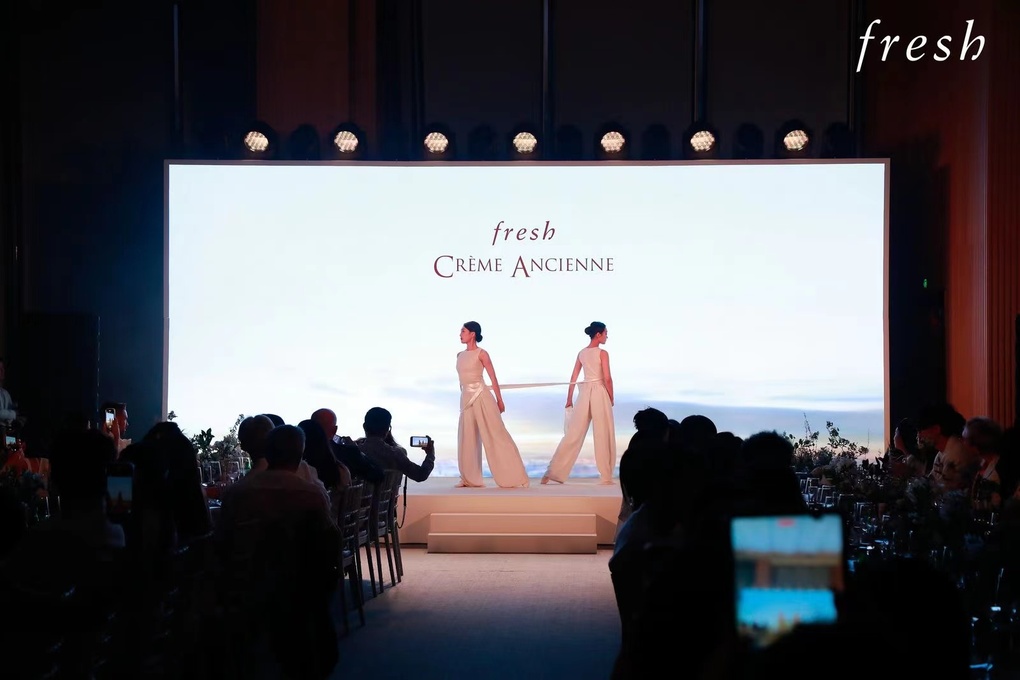
He was convinced. “I came back and told the team we had to figure out how to do it. That’s part of the fresh DNA – the sky’s the limit, it’s one of our biggest core values.
“I think it took my team time to digest it all because I was speaking so fast. But they all understood that we needed to find a monastery!”
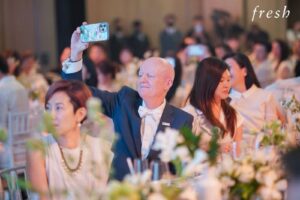
Not something easily done. “You don’t just send an email to the monks,” he says, in describing the extraordinary European-wide search for the right partners that ensued. After a suitable collaboration was found (a nunnery in Norway), small-scale production began. Crème Ancienne was born. But as demand grew – “it really flew off the shelves” – the seven sisters, who somehow had found themselves in the skincare business, could not manage the growing demand.
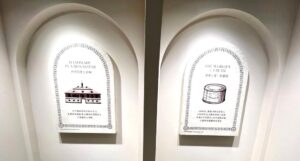
A new search was required, one that eventually led to a monastery in the Czech Republic. As part of the agreement that ensued, fresh – via renowned English architect John Pawson – renovated the facility, including the creation of a state of the art production line.
“The original cream is a sacred formulation. It’s in whatever proportions the way Claudius Galenus created it,” comments Glazman, saying that only minor tweaks have been made to create an even more effective product.
“Now this product is recommended by dermatologists. If you’re doing any kind of laser procedures or plastic surgery, this actually helps to reduce the scar tissue. So the product is magical. It’s a miracle product and it represents everything we stand for. The history, the ritual, the attention to detail, the respect for innovation. It brings back a piece of history that nobody even knew about.”
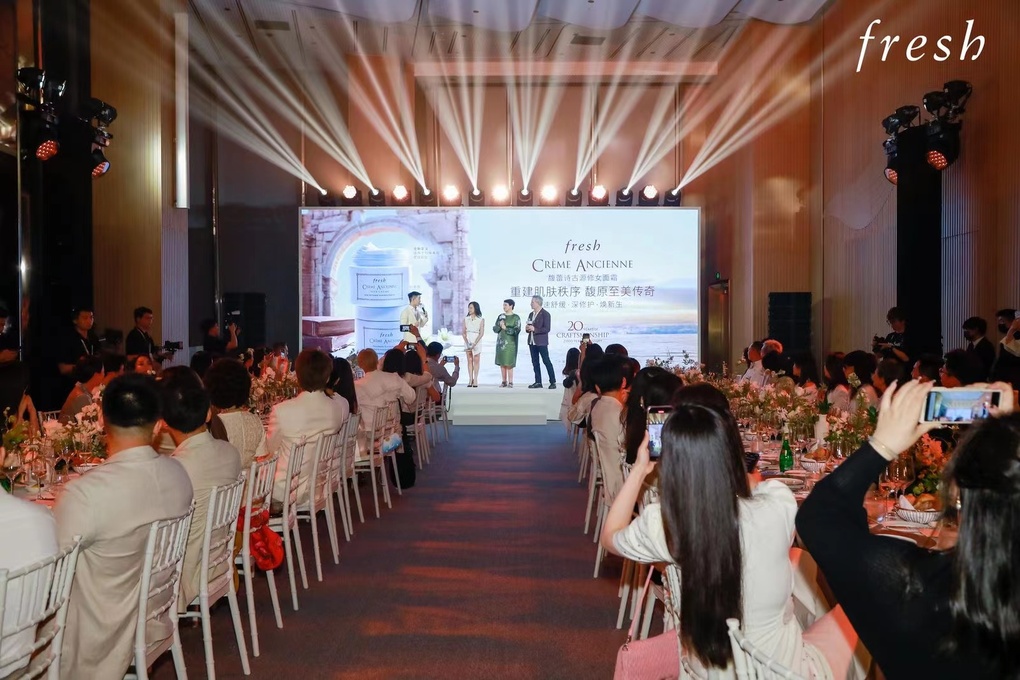
To Catch a Thief
And now Crème Ancienne is creating a very modern success story. Our time is up but before the founders head off on a store visit prior to the evening’s celebrations, I ask who are their inspirations from outside the business world.
Glazman’s response is as impromptu as it is unexpected.
“Cary Grant,” he says in reference to that most debonair of English actors, who became one of Hollywood’s leading men over a three-decade career from the 1930s.
“I remember watching the movie To Catch A Thief and it was beautiful. With Grace Kelly. There was just a feel about it. He [Cary Grant] was not doing business, he was a thief, right? But there was something about the dream world he lived in and how he navigated through it with his elegance. It has always sort of put me in this dream state, so I was like, ‘What a man.’”
For Roytberg there is only one candidate. “It was my maternal grandmother, who was this really incredible person. She migrated with us when we came from Ukraine in 1978. She got a dictionary and tried to learn English. She was one of those people who just believed in moving ahead and that you don’t get stuck. If she was alive when we started the business, I think she would have been our biggest champion.
“She only had four years of school and she worked really hard all her life. She used a lot of these little colourful idiomatic expressions and as I get older they keep coming back to me. She was an amazing grandma, so one day I’m also going to be an amazing grandma.
“She was an example of people who work hard; who did not have a lot of options but were able to make their life better. This is what we’re teaching our daughters [aged 30 and 26] – not to take it for granted in your life. Appreciate it, every day.”
It’s both a poignant memory and a powerful mantra. Alina Roytberg and Lev Glazman have indeed taken nothing for granted but simply kept on reaching for the sky. ✈
